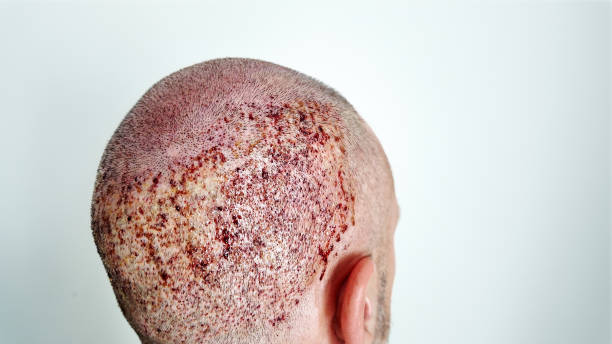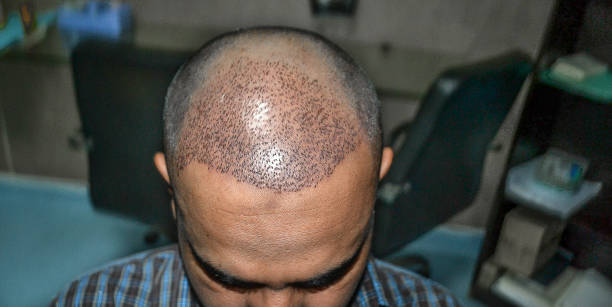Undergoing a hair transplant is an exciting step toward restoring confidence and reversing hair loss—but it comes with critical aftercare responsibilities, especially in the first few days. One of the most overlooked yet crucial aspects of recovery is the sleep position after hair transplant.
Beyond graft protection, quality sleep is essential for cellular repair, collagen production, and reducing post-operative swelling. Inadequate rest or improper positioning can prolong inflammation, increase pain, and impair the regeneration process.
A renowned dermatologist and cosmetologist in Rajasthan, explains:
“The newly implanted hair follicles are extremely fragile during the initial healing phase. Even the slightest friction, pressure, or contact with bedding can dislodge grafts, lead to folliculitis, or disrupt blood supply to the scalp—all of which could impact your final results. The way you sleep can literally make or break the success of the surgery.”
The Best Practices for Sleeping Post Hair Transplant
Your sleeping position plays a vital role in safeguarding transplanted follicles during their most vulnerable phase. Here’s how to optimize your sleep to support healing.
Each of the following tips has a specific role in protecting the grafts and aiding recovery:
- Sleep with Your Head Elevated
Keep your head elevated at a 45-degree angle for the first 5–7 days. This reduces swelling and prevents direct contact with the pillow. Use 2-3 pillows or a recliner chair if available.

- Use a Neck Pillow
A neck pillow for hair transplant acts as a buffer against side movement during sleep. It keeps your head stable and avoids unintentional contact with the grafted area, especially helpful for those who tend to toss and turn.
- Avoid Sleeping on Your Stomach or Sides
Lying face down or sideways exerts pressure directly on the recipient area. This can dislodge grafts or cause bleeding. Always sleep on your back in a semi-upright position until cleared by your surgeon.
- Protect the Pillowcase
Use a clean, soft, breathable pillow cover—preferably made from satin or silk—to minimize friction. Hygiene matters too; changing pillowcases daily helps avoid infections.
- Keep the Sleeping Area Cool and Quiet
A calm environment promotes uninterrupted sleep. Avoid sleeping under heavy blankets or in overly warm settings that may lead to sweating, which can irritate healing skin.
A proficient Hair Transplant Surgeon in Rajasthan, shares:
“I advise all my patients to use a travel pillow for additional support and to sleep on their backs at an incline. It sounds simple, but consistent adherence for the first week can significantly improve graft survival rates and comfort.”
When Can I Sleep Normal After Hair Transplant?
Many patients wonder, “How many days after hair transplant can I sleep normally?” Fortunately, the timeline is clearer than you might expect.
- Days 1–7: Sleep Elevated & On Your Back
This is the most critical period. Swelling is common, and grafts are still anchoring to their new sites. Avoid pressure or movement at all costs.
- Days 8–14: Gradual Return to Normalcy
Most scabs begin to fall off by this stage. You may begin lowering your elevation slightly but continue sleeping on your back.
- After Day 14: Resume Normal Sleeping
Most people can safely resume their usual sleep position after two weeks—if cleared by their surgeon. By this time, grafts are firmly rooted, and swelling typically subsides.
An experienced cosmetologist and transplant specialist in Rajasthan, advises:
“Healing speeds vary from person to person, but by Day 14, most patients can return to their regular sleep habits. However, always get a personalized clearance before changing sleep posture.”
Common Complications & How to Avoid Them
Improper sleep posture is more than uncomfortable—it can directly lead to complications post-transplant. Let’s look at the most frequent issues and how to prevent them.

- Dislodged Grafts
Sleeping on your side or stomach increases the risk of disturbing newly placed grafts. Always sleep on your back with head support.
- Swelling (Edema)
This usually affects the forehead and around the eyes. Elevating your head reduces fluid accumulation.
- Bleeding or Oozing
Rubbing your head against a pillow or touching the scalp inadvertently during sleep can cause minor bleeding. A neck pillow helps limit such movements.
- Infections
Dirty pillowcases, poor hygiene, or excessive sweating can introduce bacteria to the scalp. Change pillowcases daily and avoid warm, humid sleep environments.
- Itching or Irritation
Improper positioning can lead to friction or overheating, which may worsen itching. Avoid scratching at all costs.
A skilled dermatologist in Rajasthan, notes:
“Most complications arise from unintentional movements during sleep. Preventive strategies like using a clean neck pillow, keeping the room cool, and staying mindful of your posture can go a long way.”
Summary: Do’s & Don’ts at a Glance
Do’s:
- Sleep with head elevated at a 45-degree angle
- Use a travel or neck pillow for stability
- Keep the sleeping environment clean and cool
- Change pillowcases daily
- Sleep on your back for at least 10–14 days
Don’ts:
- Avoid sleeping on your sides or stomach
- Don’t scratch or touch your scalp while sleeping
- Avoid tight or rough pillowcases
- Don’t sleep in overly hot or humid rooms
- Never ignore post-op instructions from your surgeon
When to Contact a Doctor
Recognizing when to seek medical attention can help you avoid unnecessary risks. Contact your surgeon immediately if you notice any of the following:
- Persistent swelling beyond 7 days may indicate fluid buildup.
- Minor spotting is normal, but continuous bleeding or discharge needs evaluation.
- Redness, heat, or pain can be signs of infection and should never be ignored.
- Foul odor or yellow pus can signal bacterial involvement and requires antibiotics.
- Some early shedding is expected, but widespread loss in the first week should be assessed.
Conclusion
Sleeping after a hair transplant isn’t just about comfort—it’s about protecting your investment. By staying upright, using the right tools like a neck pillow for hair transplant, and being mindful of positioning, you give your follicles the best chance to survive and thrive.
Patience is essential. Follow post-op sleep guidelines for the recommended duration, and consult with your doctor before resuming normal sleep routines. With proper care, you’ll be rewarded with healthy hair growth and natural-looking results.
FAQ
Q1. Can I sleep flat on my back after hair transplant surgery?
Q2. Is a neck pillow mandatory after hair transplant?
Q3. Can I use ice packs while sleeping to reduce swelling?
Q4. I accidentally slept on my side on Day 5—what should I do?
Q5. Can poor sleep slow down my hair transplant recovery?
References:
https://www.treatmentroomslondon.com/hair-transplant-tips/how-to-sleep-after-hair-transplant/
https://www.plasticsurgery.org/cosmetic-procedures/hair-transplantation-and-restoration/recovery
Disclaimer: The information shared in this content is for educational purposes only and not for promotional use.






